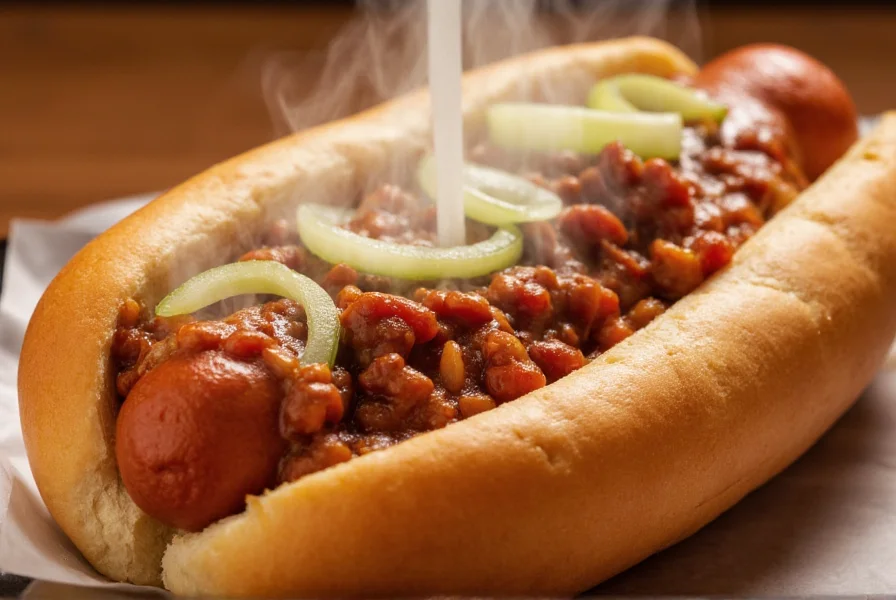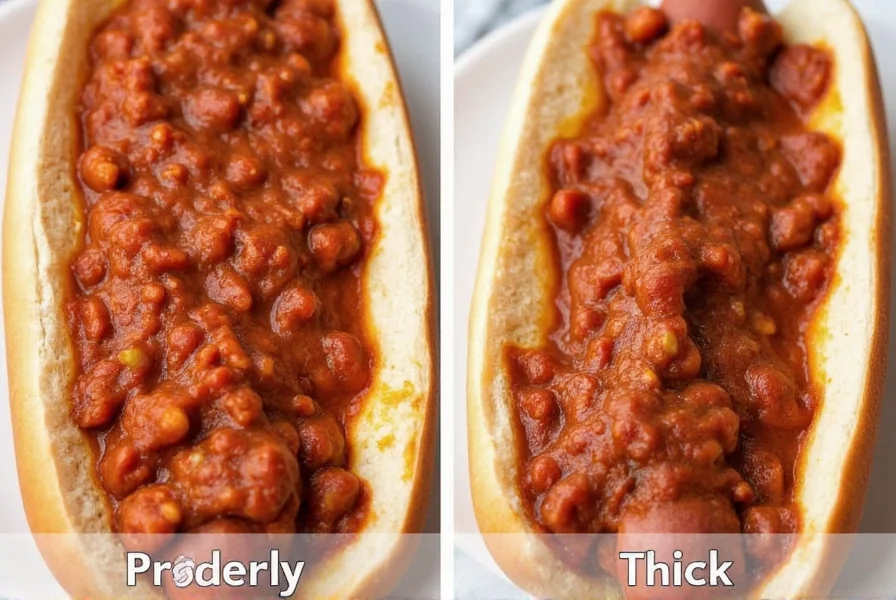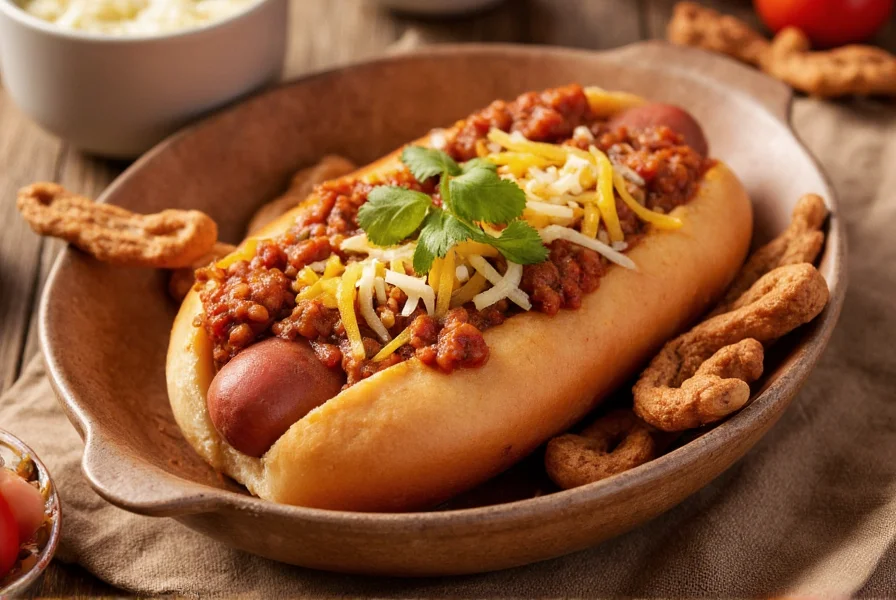Creating exceptional hotdog chili requires understanding its unique characteristics that distinguish it from standard chili recipes. While traditional chili stands on its own as a hearty meal, hotdog chili serves as a flavorful accent that enhances the hot dog experience. The ideal hotdog chili has a smooth, pourable texture that clings to the hot dog without making the bun soggy, with a flavor profile that complements rather than competes with the sausage.
The Essential Components of Great Hotdog Chili
What sets hotdog chili apart begins with ingredient selection. The meat component typically uses 80/20 ground beef for optimal fat content that carries flavor without excessive greasiness. Unlike traditional chili that might feature cubed meats, hotdog chili relies on finely ground beef that creates a smooth, uniform texture.
Tomato products form the acidic backbone—canned tomato sauce works better than crushed tomatoes for the right consistency. The spice profile is where hotdog chili reveals its distinctive character: a blend of sweet spices like cinnamon and allspice balanced with savory elements like cumin and mustard powder. This combination creates the signature flavor that defines quality hotdog chili.
Classic Hotdog Chili Recipe
Follow this straightforward recipe for authentic-tasting hotdog chili that elevates ordinary hot dogs to something special:
| Ingredient | Amount | Preparation Notes |
|---|---|---|
| Ground beef (80/20) | 1.5 lbs | Browned and drained of excess fat |
| Tomato sauce | 15 oz can | Not paste or crushed tomatoes |
| Water or beef broth | 1 cup | For proper consistency |
| Yellow onion, finely diced | 1 medium | Sautéed until translucent |
| Chili powder | 1 tbsp | Mexican-style, not cayenne |
| Ground cumin | 1.5 tsp | Freshly ground preferred |
| Ground cinnamon | 0.5 tsp | Essential for authentic flavor |
| Yellow mustard powder | 1 tsp | Not prepared mustard |
| White vinegar | 1 tbsp | Adds necessary tang |
| Worcestershire sauce | 1 tbsp | For umami depth |
Instructions: Brown and drain ground beef. Sauté onions in reserved beef fat until translucent. Return beef to pan, add tomato sauce, water/broth, and all spices. Simmer uncovered for 25-30 minutes, stirring occasionally, until flavors meld and sauce reaches pourable consistency. Adjust seasoning with salt, vinegar, or a pinch of sugar as needed.

Regional Variations Across America
Hotdog chili isn't a one-size-fits-all condiment. Regional interpretations reflect local tastes and traditions:
- Cincinnati-style: Features a distinctive sweet-savory profile with cinnamon and no beans, traditionally served over spaghetti with onions and cheese (known as "three-way" or "four-way" with added beans)
- Detroit Coney Island: Thicker, meatier version with heavy mustard notes, often featuring a secret blend of spices unique to each establishment
- West Virginia hotdog chili: Incorporates more vinegar for tanginess with a thinner consistency that soaks into the bun
- Chicago-style: Uses yellow mustard prominently with relish and sport peppers as complementary toppings
Perfect Pairings: Hot Dogs and Toppings
The hot dog itself matters as much as the chili. All-beef hot dogs with natural casings provide the best texture and flavor contrast. Avoid pre-slit hot dogs as they tend to become waterlogged.
Traditional toppings follow the "all-the-way" principle in many regions:
- Onions: Finely diced white onions add necessary crunch and sharpness
- Mustard: Yellow mustard works best with hotdog chili (not Dijon or spicy brown)
- Relish: Sweet pickle relish complements the chili's sweetness
When assembling, the proper order matters: hot dog in bun, then mustard, followed by chili, then onions. This layering prevents the bun from becoming soggy while allowing each component to shine.
Common Mistakes to Avoid
Even experienced cooks make these errors when preparing hotdog chili:
- Over-thickening: Hotdog chili should coat the back of a spoon but remain pourable. If it's too thick, it becomes gloppy rather than enhancing the hot dog
- Imbalanced spices: Too much cinnamon overwhelms, while insufficient mustard powder creates a one-dimensional flavor
- Insufficient simmering: The flavors need at least 25 minutes to meld properly—rushing this step results in disjointed flavors
- Using the wrong tomato product: Tomato paste makes chili too thick, while crushed tomatoes create unwanted texture

Storage and Reheating Tips
Hotdog chili actually improves in flavor after sitting for a day as the spices continue to meld. Store cooled chili in an airtight container in the refrigerator for up to 4 days.
For best results when reheating:
- Warm gently over low heat, stirring frequently
- Add a splash of water or broth if the chili has thickened too much during storage
- Avoid boiling, which can cause the sauce to separate
- Never reheat chili more than once for optimal food safety
For longer storage, freeze portions in freezer-safe containers for up to 3 months. Thaw overnight in the refrigerator before reheating.
Frequently Asked Questions
What's the difference between hotdog chili and regular chili?
Hotdog chili is specifically formulated as a topping with a thinner consistency, sweeter profile, and distinctive spice blend featuring cinnamon and mustard powder. Regular chili con carne is thicker, spicier, often contains beans and larger meat pieces, and is designed to be a standalone meal rather than a condiment.
Can I make hotdog chili without beans?
Yes, traditional hotdog chili typically doesn't contain beans. Cincinnati-style and Detroit Coney Island variations are bean-free, focusing instead on the meat-tomato-spice combination. Beans are sometimes added in West Virginia style, but they're not essential to authentic hotdog chili.
How do I fix hotdog chili that's too spicy?
If your hotdog chili has become too spicy, add a small amount of sugar or honey to balance the heat, along with a splash of vinegar for acidity. Dairy products like a spoonful of sour cream can help, but they may alter the texture. The best approach is prevention—add spices incrementally and taste as you go.
What's the best way to serve hotdog chili at a party?
For parties, keep hotdog chili warm in a slow cooker set to 'warm' (not 'cook'). Provide small ladles for guests to serve themselves. Set out bowls of traditional toppings (onions, mustard, relish) separately so guests can customize their hot dogs. Use split-top buns which hold the chili better than standard hot dog buns.
Can I use turkey or chicken instead of beef for hotdog chili?
While traditional hotdog chili uses beef, you can substitute ground turkey or chicken. However, you'll need to compensate for the lower fat content by adding a tablespoon of olive oil during cooking and possibly increasing the spice levels slightly, as leaner meats don't carry flavors as effectively. The resulting chili will have a lighter flavor profile that some prefer.











 浙公网安备
33010002000092号
浙公网安备
33010002000092号 浙B2-20120091-4
浙B2-20120091-4